Kenya Flag Meaning
Three horizontal stripes of black, red, and green separated by narrow white stripes, with a traditional Maasai shield and two crossed spears centered on the flag, representing Kenya's struggle for independence and the defense of freedom.
- Continent
- Africa
- Adopted
- 1963
- Ratio
- 2:3
- Colors
- black, red, green, white
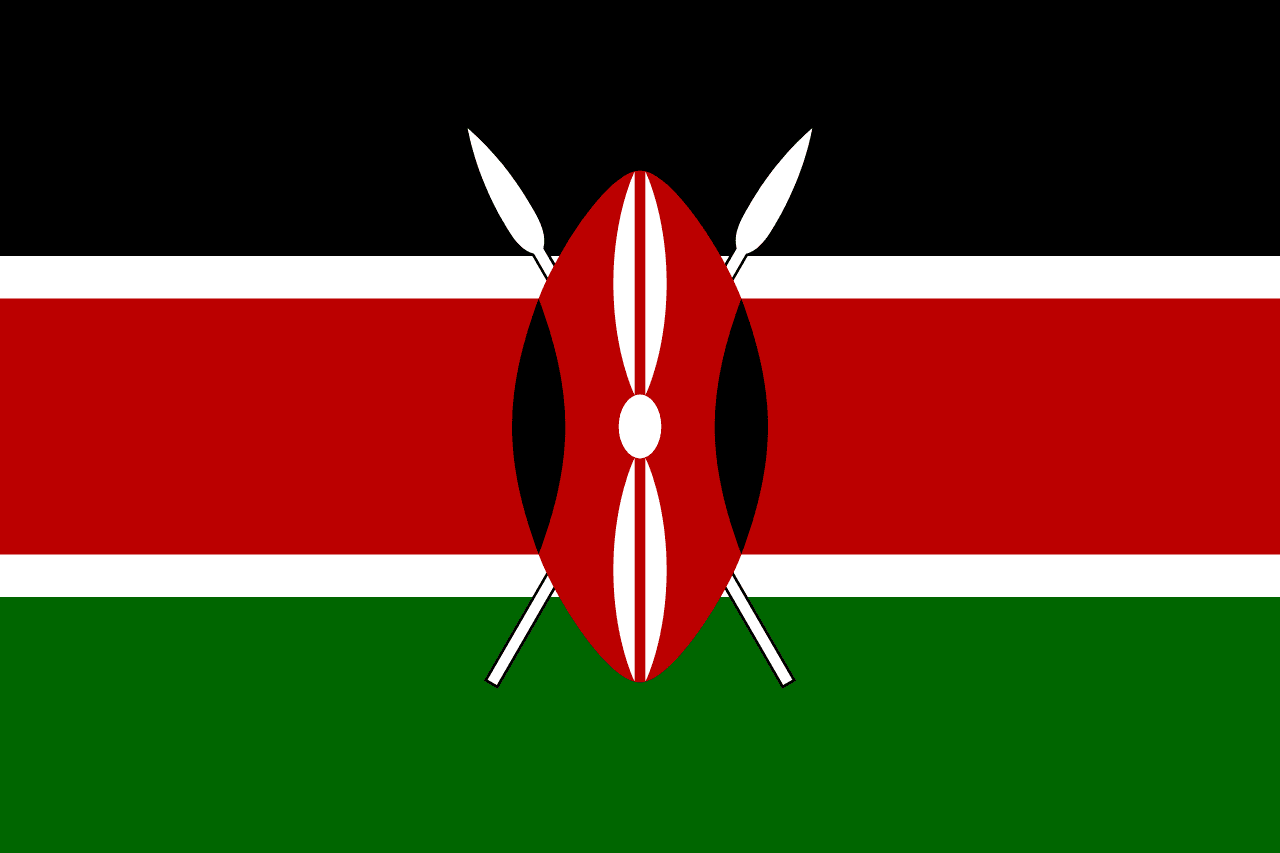
Symbolism
Black Stripe: Represents the African people of Kenya and the broader African continent, emphasizing Kenya's identity as part of Africa and pride in African heritage and unity.
Red Stripe: Symbolizes the blood shed during Kenya's struggle for independence from British colonial rule, honoring the sacrifices made by freedom fighters and martyrs who died for liberation.
Green Stripe: Represents Kenya's rich agricultural land, natural resources, and lush landscapes, symbolizing the country's fertility, prosperity, and commitment to environmental conservation.
White Stripes: Symbolize peace, unity, and honesty, representing the desire for harmony among Kenya's diverse ethnic communities and the pursuit of truth and justice.
Maasai Shield and Spears: Traditional weapons representing the defense of freedom, unity, and the willingness to defend Kenya's hard-won independence. The shield also symbolizes protection of the nation's values and sovereignty.
History
- 1895-1963: Kenya was a British colony (British East Africa, later Kenya Colony), using British colonial flags while indigenous communities like the Kikuyu, Luo, and Maasai maintained their traditional symbols.
- 1952-1960: The Mau Mau Uprising against British rule intensified the independence struggle, with freedom fighters using various symbols of resistance that would influence future national symbols.
- 1960-1963: As independence approached, Kenyan leaders developed national symbols that would represent unity among diverse ethnic groups while honoring the independence struggle.
- December 12, 1963: Kenya gained independence from Britain under Prime Minister Jomo Kenyatta, and the current flag was adopted to represent the new nation's values and aspirations.
- December 12, 1964: Kenya became a republic with Jomo Kenyatta as president, but the flag remained unchanged, representing continuity from independence through the establishment of republican government.
- 1978-2002: Under President Daniel arap Moi's long rule, the flag represented Kenya's stability and development as a regional leader in East Africa.
- 2002-Present: Through democratic transitions and economic growth, the flag has continued to represent Kenya's role as East Africa's economic hub and a leader in regional integration.
Trivia
- Kenya's flag is based on the flag of the Kenya African National Union (KANU), the political party that led the independence movement under Jomo Kenyatta.
- The Maasai shield and spears represent the willingness to defend freedom, making Kenya one of the few countries with traditional weapons as central flag elements.
- Kenya is famous worldwide for its long-distance runners, and the flag appears prominently at Olympic Games where Kenyan athletes dominate marathon and distance events.
- The flag represents the birthplace of humanity, as some of the oldest human fossils have been discovered in Kenya's Rift Valley region.
- Mount Kenya, the country's highest peak and namesake, is Africa's second-highest mountain, and the flag's colors reflect the diverse landscapes from coast to highlands.
- Kenya's flag appears on safari vehicles worldwide, as the country is synonymous with wildlife tourism and the 'Big Five' game animals.
- The flag represents a country that is home to the annual Great Migration, where millions of wildebeest and zebras cross from Tanzania's Serengeti to Kenya's Maasai Mara.
- Nairobi, Kenya's capital, hosts the United Nations Environment Programme headquarters, making the flag a symbol of environmental leadership in Africa.
- The flag appears on Kenyan shilling banknotes alongside images of wildlife and national landmarks, connecting economic identity to natural heritage.
- Kenya was the first African country to establish a national park (Nairobi National Park in 1946), and the flag represents this pioneering conservation leadership.
- The flag represents a country with over 40 ethnic groups, with the Maasai symbols chosen for their recognition across different communities.
- Kenya's tea and coffee exports are marketed worldwide under the flag, as the country is one of the world's largest producers of both crops.
- The flag appears at the African Union headquarters during meetings, as Kenya plays a leading role in African integration and peacekeeping efforts.
- Kenya's flag protocol requires special respect during Jamhuri Day (December 12), celebrating both independence and the establishment of the republic.
- The flag represents a country that has produced Nobel Peace Prize winner Wangari Maathai, who founded the Green Belt Movement for environmental conservation.
Related Countries
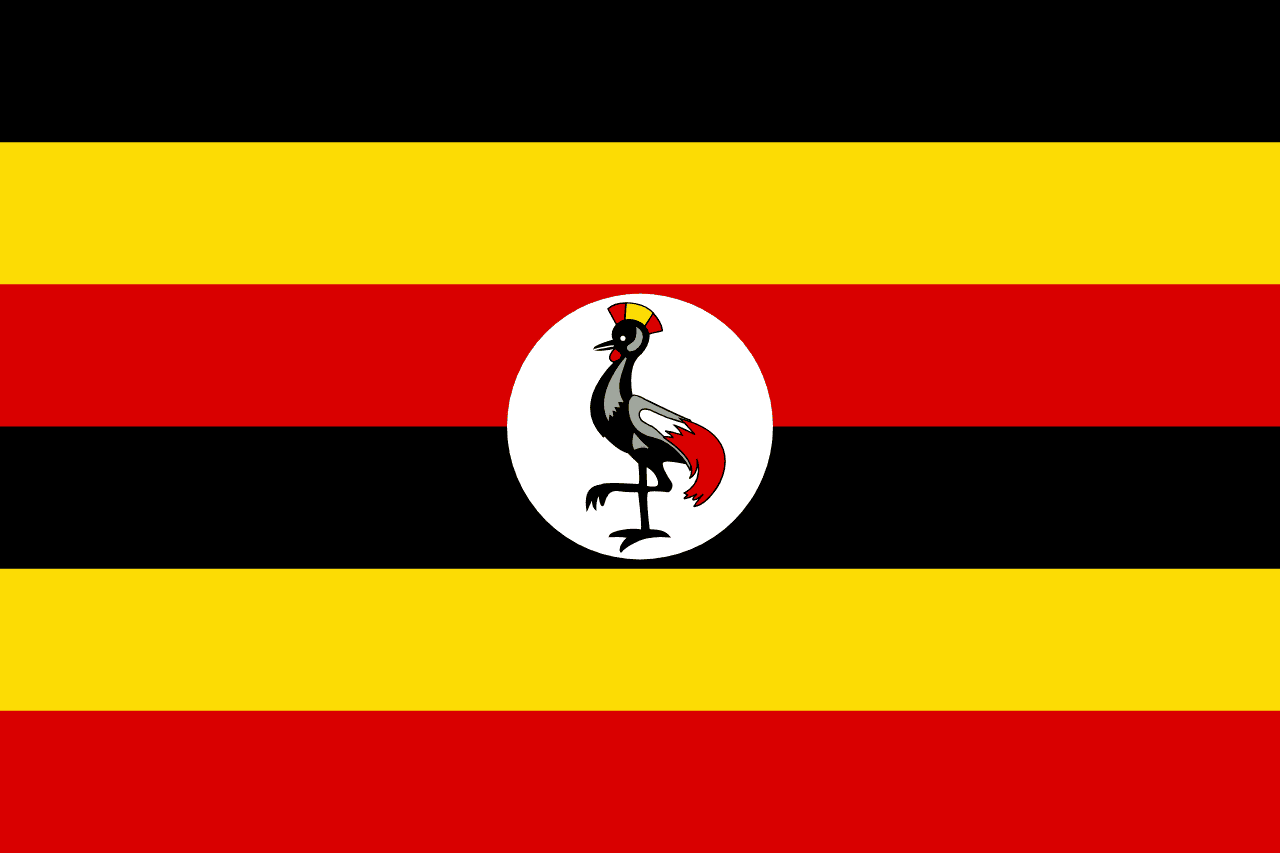
Uganda
Africa
Six horizontal stripes alternating black, yellow, and red (repeated twice) with a white circle containing the grey crowned crane in the center, representing the African people, sunshine and prosperity, brotherhood and unity, and the national bird that symbolizes Uganda's forward movement.
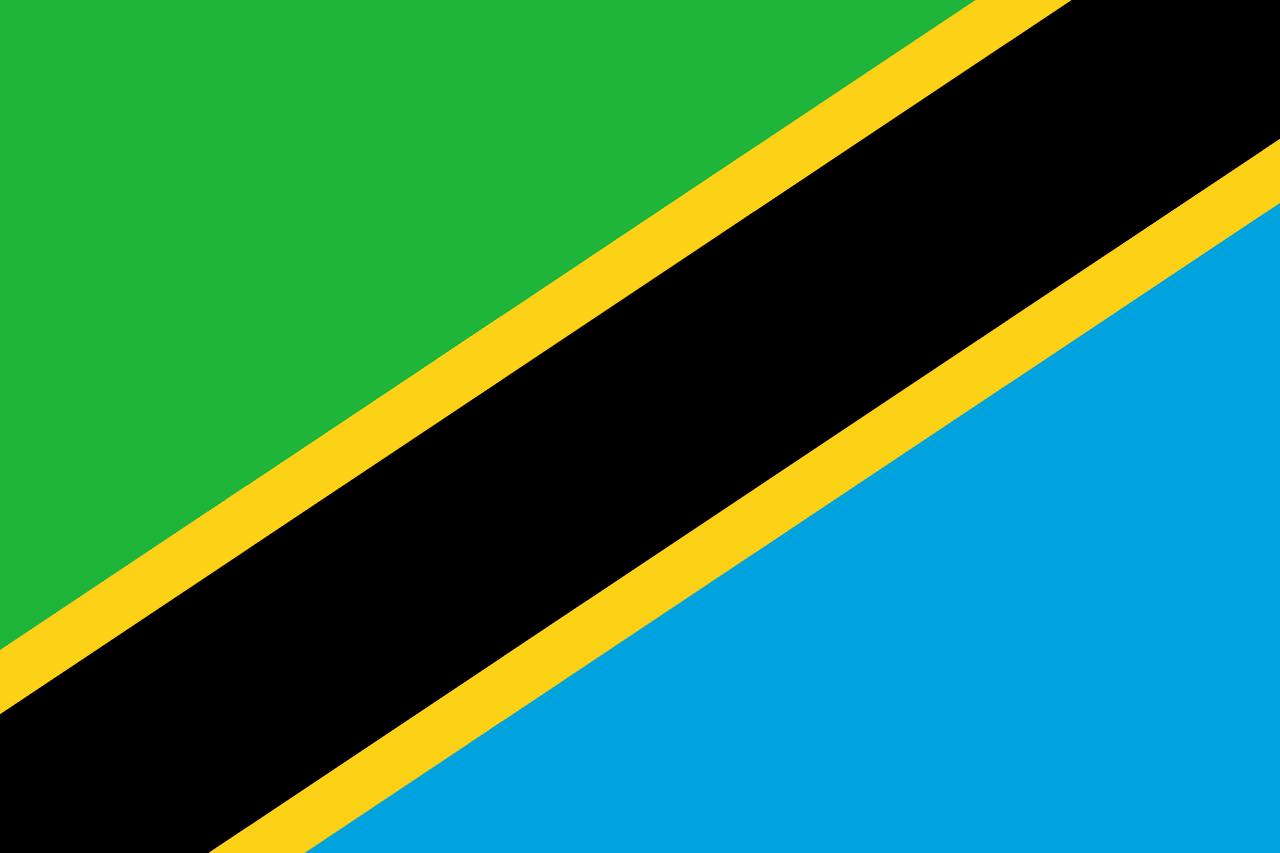
Tanzania
Africa
A green triangle in the upper hoist, a blue triangle in the lower fly, separated by a diagonal black stripe bordered by yellow stripes, representing the country's agriculture and forests, mineral wealth, the African people, and the Indian Ocean, symbolizing the union of Tanganyika and Zanzibar.
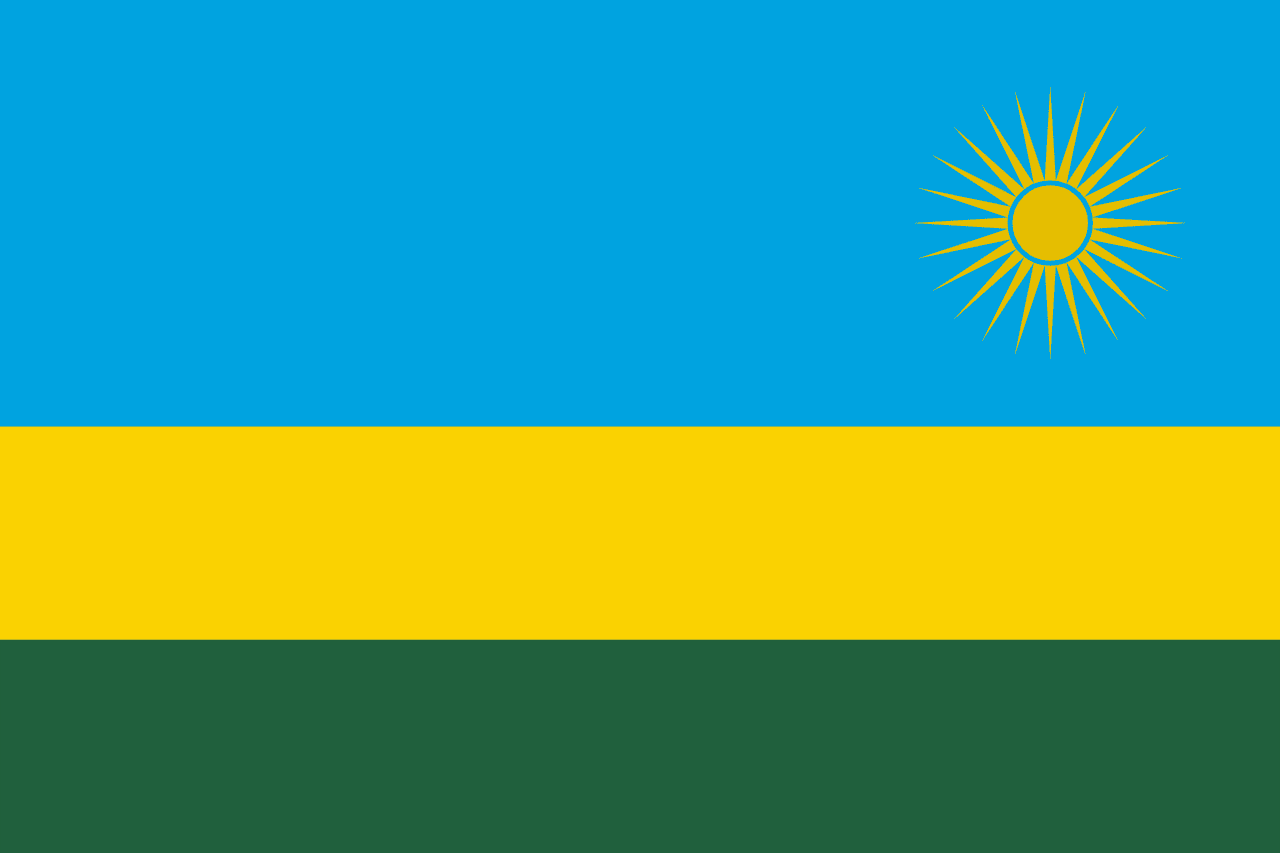
Rwanda
Africa
A tricolor of blue, yellow, and green bands with a golden sun in the upper fly corner. Adopted in 2001, the flag symbolizes unity, hope, and a new era of peace following the 1994 genocide.
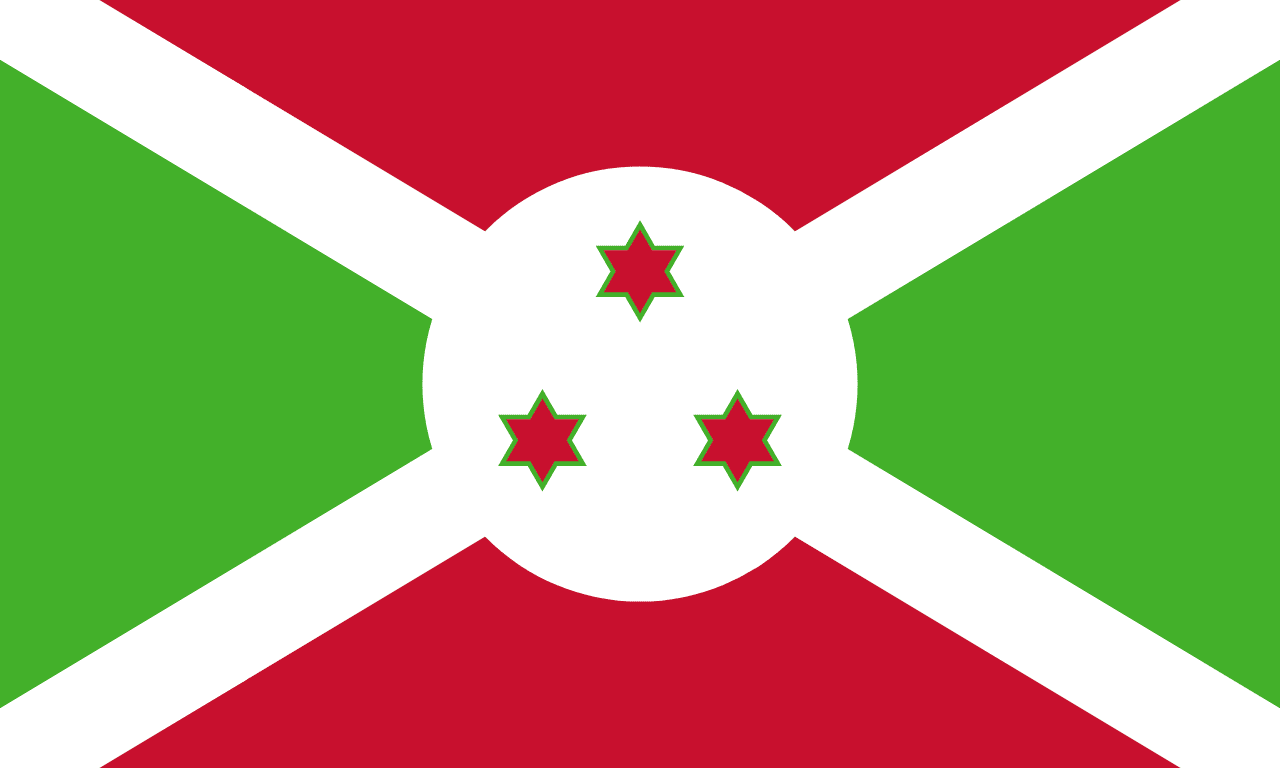
Burundi
Africa
A white diagonal cross dividing the flag into alternating red and green triangles, with three red stars outlined in green in the center circle, representing unity, work, progress, and the three ethnic groups of Burundi.
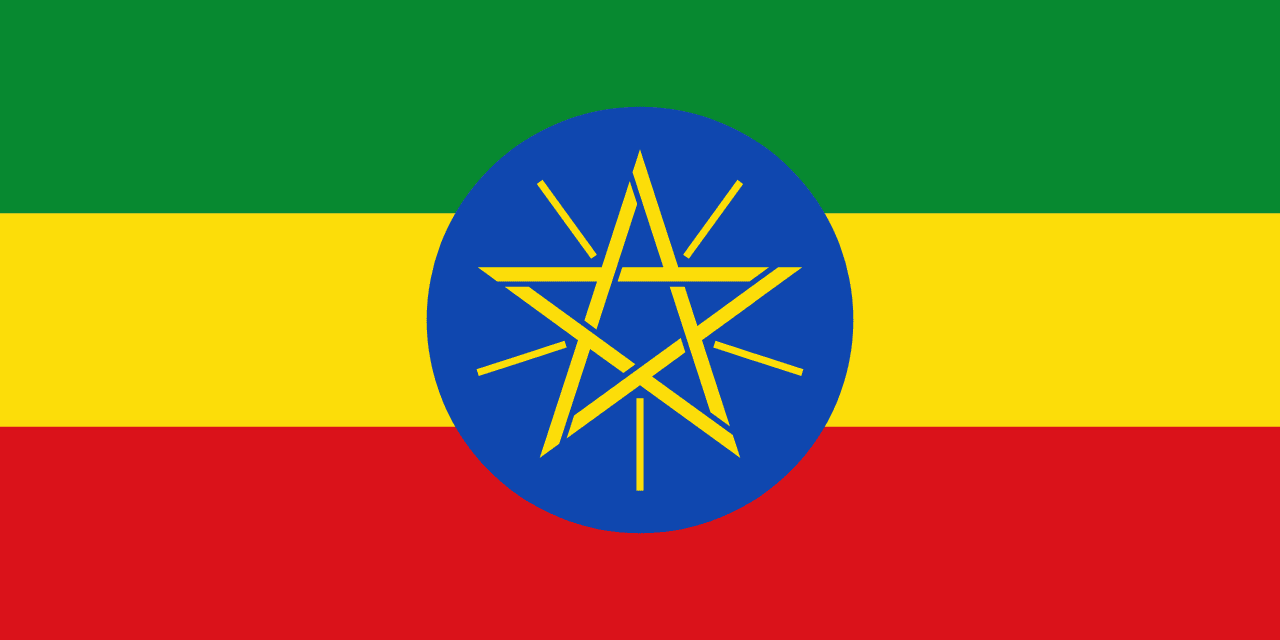
Ethiopia
Africa
Three horizontal stripes of green, yellow, and red with a blue circle containing a yellow five-pointed star in the center, representing the original Pan-African colors, the diversity and unity of Ethiopia's peoples, and the country's ancient independence.
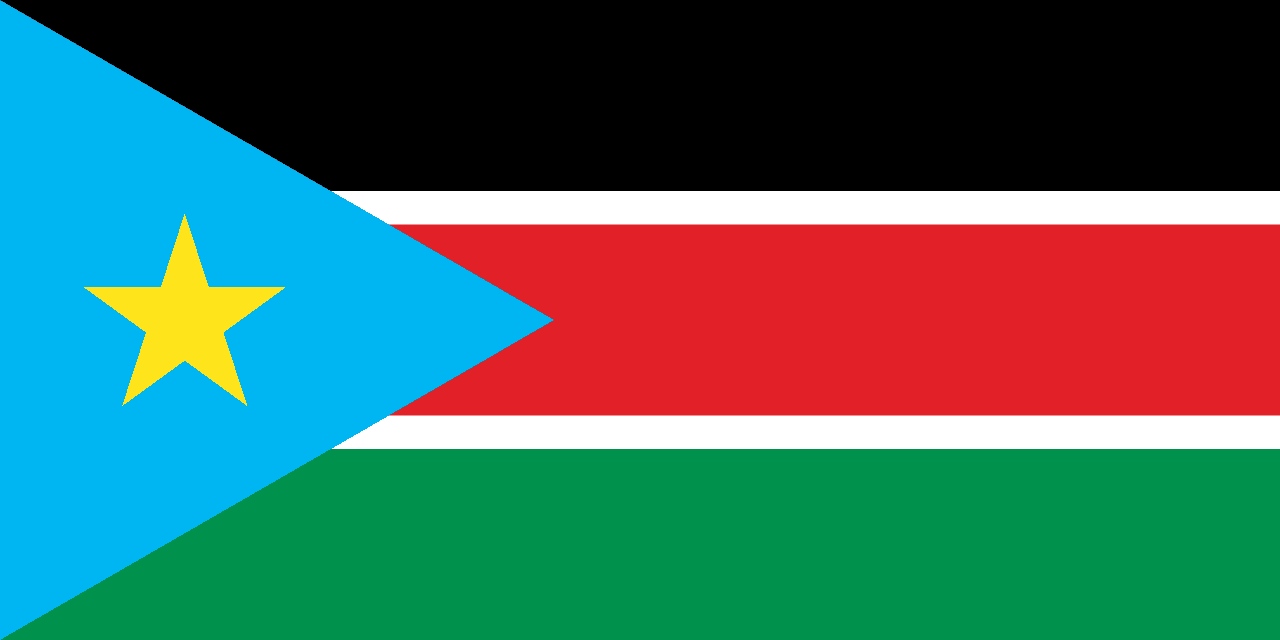
South Sudan
Africa
Three horizontal stripes of black, red, and white with a blue triangle at the hoist containing a yellow star, representing the African people, the blood shed for freedom, peace, the Nile River, and the unity of the states, designed for the world's newest country upon independence in 2011.